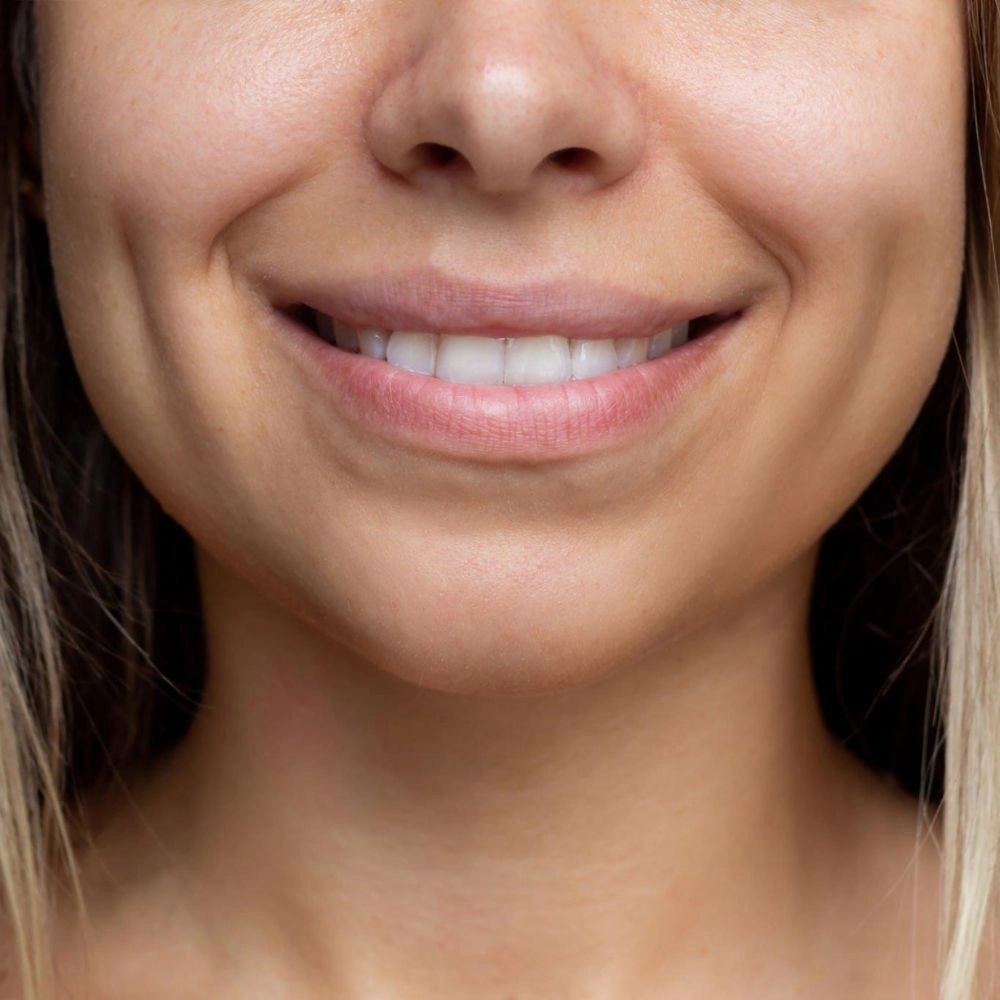Table of content
- Types of BREAST RECONSTRUCTION
- Procedure
- Risks and complications
- Pre-operation preparation
- Post-operative care
- Expected Results and recovery timeline
- Appointments and consultation
- Frequently asked questions
- Meet the team
- Pricing and payment plans
- Medical literature and research
- Support and counseling
- Send a message
CHEEKS DIMPLES
INDICATION – BRIEF
Cheek dimples are genetic traits linked to a specific gene in DNA, inherited through an incomplete dominant pattern. They’re visible when smiling due to a variation in the zygomaticus major facial muscle, which causes a small defect leading to an indentation. The defect can occur naturally during embryonic development, and there’s no clinical condition directly causing cheek dimples. Culturally, dimples are sometimes seen as attractive, leading to cosmetic surgeries to artificially create them. While generally harmless, any significant changes in skin or facial structure should be assessed by a healthcare professional to rule out health concerns.

INDICATION – DEFINITION
Cheek dimples are often visible when a person is smiling, and they’re caused by variations in the structure of the facial muscle known as the zygomaticus major. Specifically, the presence of a dimple indicates that there’s a small defect in the muscle, causing it to shorten and pull on the overlying skin to create a small indentation. This is not considered a medical problem but simply a normal variant.
On a clinical level
the variation or ‘defect’ can occur naturally during the embryonic development. There is no known clinical condition directly associated with the formation of cheek dimples.
On a non-clinical level
it’s also important to mention that perceptions of dimples can be influenced by cultural and societal factors. In some cultures, dimples are highly desirable and are seen as a sign of beauty. There are even surgical procedures available that can create artificial dimples for those who desire them.
Please note that while dimples are generally harmless, any changes in the appearance of your skin or facial structure should be evaluated by a healthcare professional to rule out any potential health concerns.
SYMPTOMS AND DIAGNOSIS
Symptoms
Since dimples are a physical trait rather than a disease, there are no symptoms associated with them. They’re simply indentations in the skin that become more noticeable when the individual smiles or moves their facial muscles.
Diagnosis
The diagnosis of cheek dimples is straightforward and can be easily done by visual examination. The presence of one or two small indentations in the cheek, usually apparent when smiling, indicates the presence of cheek dimples.
It’s worth noting that if you or your child have new, sudden, or changing indentations or dimples in the cheeks or any other part of the skin, you should consult with a dermatologist or other healthcare provider to rule out other potential health issues. Some conditions, such as forms of cutaneous lupus or certain types of skin cancer, can cause changes in the skin’s appearance, so it’s important to have any concerns checked by a healthcare provider.
Prognosis and Impact

Prognosis
Since cheek dimples are not a disease or medical condition, but a genetic trait, there is no typical ‘prognosis’ associated with them. They do not change over time or lead to health complications. Dimples are often lifelong characteristics, though they can become less noticeable as a person ages and their facial fat composition changes.
Impact
The impact of cheek dimples is largely cosmetic and can vary greatly depending on personal and cultural perspectives. In many cultures, dimples are seen as attractive and desirable. They are often associated with youthfulness and are considered a positive trait.
However, for some, cheek dimples can contribute to concerns about body image, particularly if they are prominent or asymmetrical. In such cases, individuals might seek out cosmetic procedures to minimize their appearance, although these are not medically necessary.
Treatment Options
- Enhancement of Dimples: For those who desire more pronounced or permanent cheek dimples, a cosmetic procedure known as dimpleplasty can be performed. This is a minimally invasive surgical procedure that creates dimples in the cheeks. It involves making a small incision inside the mouth and creating a suture between the buccinator muscle and the skin to mimic the natural way a dimple is formed. This procedure should only be performed by a qualified and experienced cosmetic surgeon.
- Reduction of Dimples: In cases where an individual wishes to reduce the appearance of their cheek dimples, consult with a cosmetic surgeon or dermatologist to discuss potential options. It’s likely that a filler injection would be considered to soften the appearance of the dimple. This is a non-surgical procedure where a substance like hyaluronic acid is injected into the skin to fill the indentation.
Risks and Side Effects
Dimple Enhancement (Dimpleplasty):
- Risks: As with any surgical procedure, dimpleplasty carries a risk of infection and bleeding. There’s also the risk of damage to facial nerves or muscles, although this is rare. Additionally, there’s the possibility that the results may not be permanent, as the sutures used to create the dimples can loosen over time.
- Side Effects: After the surgery, there may be swelling, bruising, and some degree of pain in the cheek area. Temporary facial weakness or numbness may occur due to local anesthesia. There’s also a risk of dissatisfaction with the cosmetic result, such as asymmetry or overly prominent dimples.
Dimple Reduction (Filler Injection):
- Risks: Risks associated with filler injections include allergic reactions to the filler material, infection at the injection site, and potential damage to skin cells. There’s also the risk of the filler material migrating from the original injection site over time, causing changes in facial appearance.
- Side Effects: Side effects can include swelling, redness, and bruising at the injection site. Lumps or irregularities under the skin can occur if the filler is not distributed evenly. In rare cases, if a blood vessel is accidentally injected with the filler, it can cause tissue death, skin necrosis, or other serious complications.
FAQ Section
Here are some Frequently Asked Questions (FAQs) about cheek dimples and their answers:
Cheek dimples are typically a genetic trait that is inherited. They are caused by variations in the structure of the facial muscle known as the zygomaticus major. Specifically, a small defect in this muscle causes it to shorten and pull on the skin, creating an indentation.
No, cheek dimples are not a health concern. They are a harmless physical trait and do not indicate the presence of any disease or medical condition.
Yes, a cosmetic procedure known as dimpleplasty can be performed to create artificial dimples. However, it’s important to note that this is a surgical procedure with its own risks and side effects, so it should be considered carefully and performed by a qualified professional.
Yes, cosmetic procedures such as filler injections can be used to reduce the appearance of cheek dimples. As with any cosmetic procedure, there are potential risks and side effects, and the procedure should be performed by a qualified professional.
Dimples can become less noticeable with age as the skin loses its elasticity and the facial fat composition changes. However, they generally remain throughout a person’s lifetime.
Not everyone. The visibility of dimples can vary greatly from person to person. Some people may only have noticeable dimples when they smile widely, while others may have dimples that are visible even when their facial muscles are relaxed.
